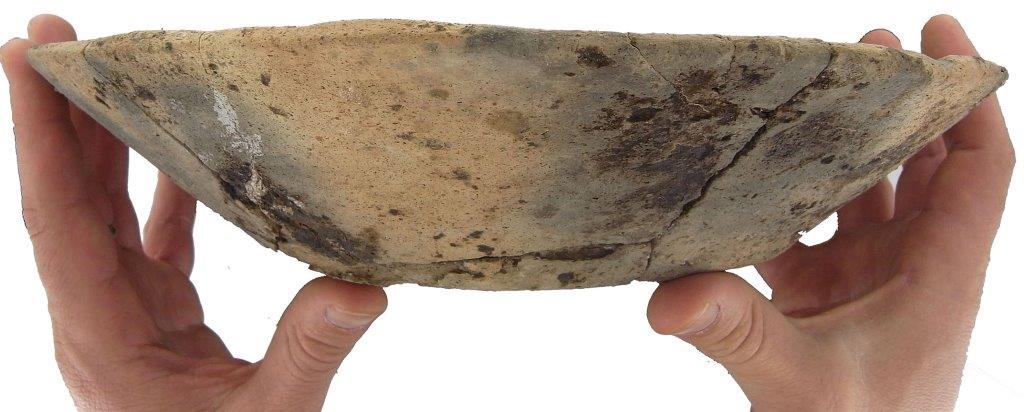Collection context
Summary
- Creator:
- Eli Lilly
- Abstract:
- The Eli Lilly Archaeology Papers, 1885-1997, consists of correspondences specifically relating to archaeology.
- Extent:
- 5.5 linear feet
- Language:
- Materials are in English
- Preferred citation:
[item], The Eli Lilly Archaeological Papers, Erminie Wheeler-Voegelin Archives, Indiana University, Bloomington.
Background
- Biographical / Historical:
Eli Lilly - The Beginnings of an Archaeologist:
Eli Lilly began his career in the family pharmaceutical company, succeeding his father as President in the year 1932. His interest in archaeology would not develop until he reached his forties and, even then, his dedication to Eli Lilly and Company would continue to absorb much of his time and attention. Still, Lilly managed to pursue his developing interest by becoming a collector of artifacts, specializing in "problematical forms" (artifacts of a mysterious, unresolved nature). He eventually transitioned from the role of interested collector to professional student. He was even driven to conclude his close friendship with W.A. McGuire, an official dealer of antiquities. As his interest progressed, Lilly became involved with an early group of archaeologists belonging to the Indiana Historical Society (IHS), a group which also included Glenn A. Black. The year 1931 marked a turning point for Lilly and his fellow IHS members when they embarked on a 3-day tour around Indiana's various archaeological sites, a trip that energized and re-confirmed Lilly's passion for prehistoric archaeology. Inspired, he began to concentrate his research and became particularly concerned with the concept of time, exploring ideas of chronology that would define his archaeological work for the rest of his life.
Eli Lilly - Professional Archaeologist:
Eli Lilly took these ideas and experiences and began to build towards two new works that would later represent his monumental contributions to the archaeology of Indiana—Prehistoric Antiquities of Indiana (1937) and the Bibliography on Indiana Archaeology (1932). As these works developed, Lilly began constructing his "plan of triangulation" for various sites around the state. This was meant to be a holistic approach to a single archaeological site, incorporating as many perspectives and methods as was relevant to solving the ancient puzzles, particularly when concerned with understanding the chronology of a given location. This approach resulted in the expansion of his involvement in the archaeological community, making him not only an active participant in research but the sponsor of other students and archaeologists as they explored their own works, recruiting them as a means of developing the larger picture of prehistoric cultures and chronologies. It was at this time that he began his collaboration with Edward Sapir in founding a fellowship for archaeological fieldwork. This was the beginning of a long period of time devoted to graciously funding and supporting other research interests and projects, demonstrating great tolerance and patience when needed. Around 1935 Lilly became involved with the Angel Mounds project, covering various costs that could not be obtained through local communities or the WPA project due to the impact of the Depression.
Eli Lilly and the GBL
The success of Eli Lilly's involvement with the Angel Mounds site might not have been possible if it had not been for his very close relationship with Glenn A. Black with whom he maintained a personal bond frequently described as one between father and son. Black maintained the care and excavation of Angel Mounds through his IU field schools, frequently writing to Lilly with updates, requests, and questions. Following Black's death in 1964, Lilly requested the opening of a new lab in Black's name, a lab which would house the results of both of their careers. His efforts were successful and the Glenn Black Lab of Archaeology opened in 1971 (Madison 1988). The lab today houses approximately 7,500 artifacts belonging to the Lilly Collection. This particular collection consists of everything from stone tools to large pottery specimens to gorgets and axes.
- Scope and Content:
The Eli Lilly papers span 1894-1923 and are arranged into one series: Correspondence and then into two subseries: correspondence by last name and general correspondence, A-Z These papers consist of Eli Lilly's correspondence with men and women in the archeaology field, an area of great interest to him. Some correspondents include notable archaeologist, anthropologists, and other scholars in related fields. Letters to Glenn A. Black, whom Lilly funded to conduct archaeological digs are also included.
- Acquisition information:
- Acession: 2014/002
- Custodial history:
This collection was receievd as part of the Angel Mounds Agreement, December 20, 1965.
- Processing information:
Processed by Allison Siekman.
Completed in 2014
- Arrangement:
This collection consists of one series: Correspondence
Indexed Terms
- Subjects:
- Archaeology--Indiana
Angel Mounds State Historic Site (Ind.) - Names:
- Lilly, Eli, 1885-1977
Black, Glenn A (Glenn Albert), 1900-1964
Voegelin, C. F. (Charles Frederick), 1906-1986
Wheeler-Voegelin, Erminie, 1903-1988
Guernsey, E.Y.
Griffin, James B. (James Bennett), 1905-1997
Guthe, Carl E. (Carl Eugen), 1893-1974
Access
- RESTRICTIONS:
-
This collection is open for research. Advanced notification is required for access.
- TERMS OF ACCESS:
-
Copyright interests for this collection have been transfered to the Trustees of Indiana University.
- PREFERRED CITATION:
-
[item], The Eli Lilly Archaeological Papers, Erminie Wheeler-Voegelin Archives, Indiana University, Bloomington.
- CAMPUS:
- Indiana University Bloomington
- LOCATION OF THIS COLLECTION:
-
Reading Room and Archive416 North Indiana AvenueBloomington, Indiana 47408, United States
- CAMPUS:
- Indiana University Bloomington
- CONTACT:
-
812-855-9544gbl@indiana.edu

